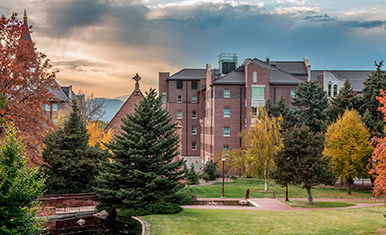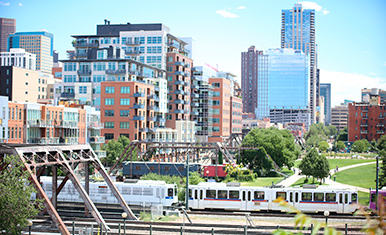Resolutions for 2021: Expanding Our Political Imaginations & Practicing “Emotional Counterpublics” for Racial Justice
Submitted by Dr. May Lin, IRISE Postdoctoral Fellow
The white supremacist storming of the U.S. Capitol on January 6th reminds us that we cannot merely hope for a return to a “normal” of state-sanctioned violence against BIPOC (Black, Indigenous, and People of Color) communities. As far too many legislators espouse limited political imagination in their responses to immense suffering, BIPOC-led movements light the way towards a more radically just now and future. Stacey Abrams points out that these movements have long made the impossible possible in the face of suppression and ridicule. After all, the Georgia Senate victories were delivered by long-term, deeply rooted BIPOC movement building led by Black women, as well as groups such as Mijente who contacted every Latinx voter in the state, Asian Americans Advancing Justice, and many more.
In my few months as a new IRISE postdoc helping to launch the Social Movements Support Lab, I am grateful to play a supporting role to some of these BIPOC-led movement groups redefining what is possible. We work with groups leading “divest/invest” campaigns to address over-investment in mass criminalization and incarceration systems and under-investment in community health and wellness especially targeting Black and Brown communities. Here, I reflect on this work in conversation with what I learned from youth organizing groups the last few years. Such movements show us how we can embrace sorely needed expansive social imaginaries and refuse stifling constraints of so-called “acceptable change.”
In my dissertation, I summarize a theme that I learned from youth organizing groups as “emotional counterpublics”: in short, truly transformative change involves embracing the power of feeling and emotions. Fighting for systemic change is not just about the external, but also acting and feeling differently- including radical love, healing, and care. This is not a novel concept- instead, groups draw on ancestral knowledge such as Xicanx and Latinx spiritual expressions, Black feminist and other feminist praxis, disability justice, Indigenous healing practices, and other forms of knowledge that have been violently suppressed by imperialist, white supremacist, capitalist, patriarchal systems. For example, Dr. Jennifer Nash argues that bell hooks, Alice Walker, June Jordan, Audre Lorde, and other Black feminists enact a long tradition of “love-politics,” in which “love acted as a doing, a call for a labor of the self, an appeal for transcending the self, a strategy for remaking the public sphere, a plea to unleash the radical imagination, and a critique of the state’s blindness to the violence it inflicts and enables.”
So what does feeling differently- whether in the form of radical healing or love-politics look like? Why and how is this necessary even as Black and Brown folks are facing immense material need and are disproportionately devastated from COVID because of racial capitalism, as Dr. Whitney Pirtle shows? After all, a justifiable critique might point out that individual acts of kindness are insufficient when racial, economic, health, and other injustices are structural problems that demand structural solutions.
For one, these approaches are about how we need care on every level of society. The need for care and love includes but also extends beyond the interpersonal. Divest/invest campaigns demand care from institutions and systems- hence youth and parent-led campaigns for “Counselors not Cops” in schools. It is not enough for electeds to make empty proclamations of love: meaningful care for Black and Brown communities requires those with power over local, regional, and national budgets to put their money where their mouths are. For example, as the BIPOC youth-led organizations in the Invest in Youth campaign in Long Beach, California, pointed out, only $204 of the city budget is spent on positive youth development programs, while $10,500 is spent on each youth arrest. Such movements press us to think more imaginatively about what care on a collective level could look like: what if we instead invested those abundant resources into systems of care rather than punishment, so that we could all thrive?
Second, such campaigns are also shaped by how organizations and communities already practice meaningful love and care for each other. This manifests as listening to each other and providing emotional support in the face of multiple levels of trauma. It means enacting new ways of being with each other that do not reproduce oppressive dynamics- for example, ensuring that marginalized folks are heard first in discussions. It also looks like the mutual aid networks that stepped in during the pandemic, continuing long legacies of marginalized communities’ care for each other amidst governmental abject neglect. Many BIPOC organizations have been meeting basic needs for their youth members, some of whom have become the sole providers for their family. While it should not be the case that everyday people have to fill in for the role that a social safety net should play, it also shows us how folks are prefiguring- that is, realizing in action- the type of society we should have.
Third, expansively enacting new political imaginaries and embracing the impossible also reminds us of the tensions of collective and individual change. Engaging in movements can also take a toll, especially on those most impacted by white supremacy. Too often social movements, including racial justice movements, have espoused burnout cultures that can demand individuals sacrifice themselves to a collective good. As Patrisse Cullors, one of the founders of Black Lives Matter pointed out, this can compound trauma for Black and Brown folks already combating the brunt of white supremacy. Instead- even as we fight for structural transformation, we must also care for ourselves and each other. Elsewhere, Geordee Mae Corpuz, Californians for Justice (CFJ) Strategy Director and I provide a snapshot of how CFJ and other youth organizing groups engage in healing and transformative justice. Because white supremacy deeply affects our bodies, souls, and psyches, our roadmap for collective change must involve not only policy change but also healing justice. This may look like rest and self-care, storytelling and artistic self-expression, and healing or talking circles, which come from a range of Black and Indigenous practices throughout the world. Radical healing recognizes, in short, that we must heal social ills through externally-oriented organizing while also addressing ills caused by social-psychological warfare as enacted by white supremacy and intertwined oppressions.
This moment throws into stark relief what Ruth Wilson Gilmore has argued: life is and should be treated as precious. The BIPOC-led movements we support fight to make life precious and recognized as such in every way- from policies to budgets to institutional priorities, to our interactions with each other, to how we regard ourselves and our place in social change. For those of us who are comrades to those most impacted- myself included- there is much we can and must do, whether putting our bodies on the line, leveraging our resources especially as we are situated within the academy, and/or conducting political education among our own communities, and much more. This is especially important as movements led by those most impacted face the immensity of white supremacy.
The need to provide robust, deep support to social movement organizations is why Social Movements Support Lab exists. Our students in a practicum class this year, for example, conducted city budget analyses, analyzed racial discrepancies in student arrests, and identified alternatives to school police to support these campaigns. In sum- there is a role for all of us to play as we follow the lead of organizers and folks most impacted by injustice. As we move forward collectively for a response to these converging pandemics, may we do so in ways that embrace expansive political imaginaries and emotional counterpublics that help us enact transformation on every level of society.
Check out Dr. May Lin's website, and listen to her interview for the IRISE RAGE podcast
More info on Social Movement Support Lab HERE


